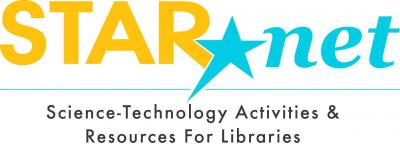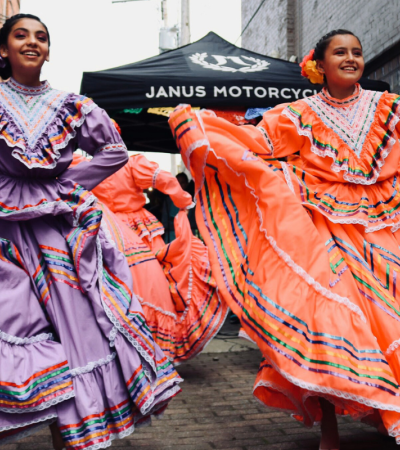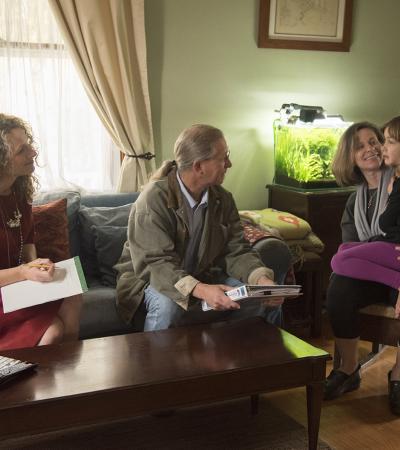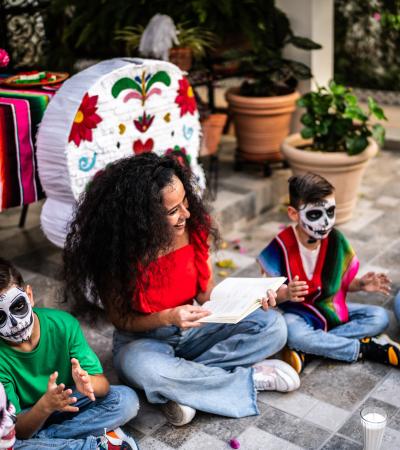As a child, I was very curious, annoying my family with my constant questions. In adulthood, that curiosity led me to librarianship. I am constantly trying to learn new things.
Libraries are key to expanding people’s curiosity, not just about the world, but about each other. For your library to truly be open to all, a place where everyone is welcome to learn about each other, you need to engage all segments of your community — not just those that you are intrinsically a part of.
>>> Interested in programming grants for Latinx communities? Learn about current ALA opportunities to support activities like these. <<<
As a Latino and a library branch manager serving Latinx communities, I’m often asked how libraries can better serve their Latinx patrons. Oftentimes, when librarians ask me this, I suspect they are really looking for program ideas. But just as there is no magic checklist for engaging white patrons or older adults or women, there is no such list for Latinos.
The real work, I tell them, is in the groundwork you do before the programming begins. Here are a few suggestions for engaging with Latinx communities (although this list, with a few modifications, could be applied to most populations that you are not part of that you wish to know better). It’s important to think of this list as a launching point as opposed to a checklist — you don’t “complete” or “check-off” engagement and relationship-building; it’s a continuous process that evolves over time.

Make a list of what you have tried so far
The first question I typically ask a librarian when they ask how to engage with Latinos is: What have you tried so far? The point is not to place blame or make excuses, but to reflect and move forward.
Be honest about previous engagement attempts: What worked? What didn’t? Who showed up? Where did you go? Was it uncomfortable? If so, why? This offers a baseline from which to strategically move forward.
I often see librarians get caught up in offering the same services to communities without reflecting on the services and impact on the community. Reflection is an important first step in this process.
Stop “othering” yourself
Librarians tend to “other” ourselves, and it does us a disservice. For those of us who work in public libraries, yes, we work for the government. But we also have kids, we have pets, we go to the same grocery stores as everyone else.
Before you can make real progress in community engagement, you must learn that you are part of the community. Our role as librarians shouldn’t be sitting on some kind of pulpit telling people what to do. We need to be on par with our library users so we can facilitate the use of our library’s resources — often their tax money — to support what they want and need.
Go to unfamiliar spaces
There’s only so much you can accomplish by staying in your libraries and making flyers. If you’re trying to make inroads with a community, go there and talk to people in the spaces they already frequent.
Those spaces could be schools, community groups, festivals, laundromats or churches. (If you’re new to community engagement, schools are a great place to start.)
When I first came to Evanston Public Library and was looking to start programming for Latinx families, I started attending catechism at a local church and paying attention to how parents engaged with their kids. It was uncomfortable at first. I was clearly an outsider, and some church leaders were rightfully protective of their community; one introduced me as “that guy from the government.” But putting myself out there was the only way to meet people and to show that I cared and wanted to learn. This is the first step in building trust.
Get comfortable with the cold call
Now, I’m not saying you should just show up anywhere, unannounced. That can come off as presumptuous.
You can introduce yourself with a simple and honest phone call. “I’m so-and-so from the library. We want to focus on outreach, and I know you have a large Latinx community. Can I come to your space and learn about what you do?”
You might be surprised how receptive people are to you when you make it clear that you are simply curious and eager to better serve their community.
Make your staff and your programming look like the community you serve
This may be a long-range plan for many libraries, but if you have input into your library’s hiring process, advocate for hiring people that look like your community members. In my newly opened branch at Evanston Public, I was purposeful in hiring as many Spanish speakers as I could. When we discuss programming, we always try to make it bilingual.
Strive for collaboration, co-creation
What does an engaged library look like? It’s important to never lose sight that the public library is just that: a library for and by the public. In this sense we represent one of the most authentic demonstrations of the democratic process at work in our country.
We should proudly reflect that in our practices. Yes, we offer services, resources and programs based on our expertise. But we should equally strive to leverage the expertise and voice of our public, equitably so. In doing so, we facilitate and foster opportunities for civic engagement.
I identify success as when community members come to the library as a collaborator for their goals. Practically speaking, that includes developing community-led programming and funding for such programming, co-decision-making on services through public committees and advisory groups, hiring local and diverse voices, building robust volunteer networks, showcasing community creativity through the arts, and fostering the formation of community groups. Success is when our community proudly says, this is my library.

About the STAR Net STEAM Equity Project
Miguel Ruiz is an advisor for the STAR Net STEAM Equity Project, an initiative of the Space Science Institute's National Center for Interactive Learning (NCIL/SSI), the American Library Association (ALA), Twin Cities PBS (TPT), Institute for Learning Innovation (ILI) and Education Development Center (EDC).
The STAR Net STEAM Equity Project will help public library workers in small and rural communities offer outstanding, culturally responsive STEAM (Science, Technology, Engineering, Arts and Math) programming and exhibitions for their patrons, especially often-underreached Latino populations.
Interested in participating? Submit a 15-minute survey about your community by July 20 to get started.



